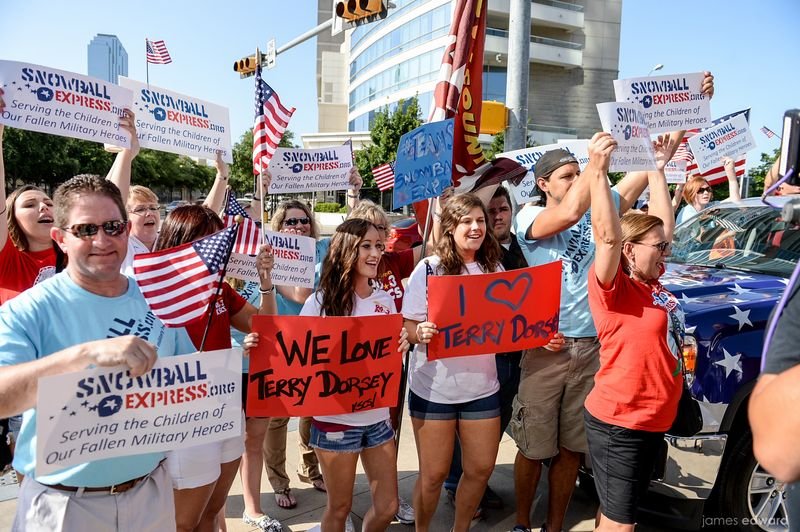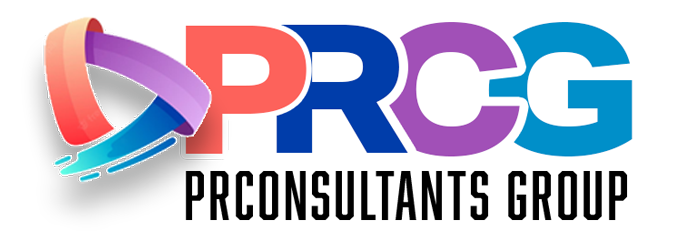Public relations (PR) stunts are a powerful way for brands to break through the noise, capture public attention and generate massive media coverage. When executed correctly, they can turn an ordinary marketing campaign into a viral sensation, creating buzz that extends beyond traditional advertising. Whether it’s a world record attempt, a heartwarming publicity stunt or a viral social media moment, PR stunts can make headlines and keep brands top of mind.
In this article, we’ll explore some of our most successful PR stunts, including notable campaigns from TrizCom PR and other brands that took the media by storm. We’ll also delve into how brands can execute national PR activations effectively.
What is a PR Stunt?
A PR stunt is a carefully planned event or campaign designed to grab media attention and spark conversations. These stunts leverage creative storytelling and bold actions to generate publicity and engage audiences.
Successful PR stunts often include:
A strong emotional appeal: Whether humorous, inspiring or shocking, effective PR stunts trigger an emotional response.
A clear brand message: The stunt must align with the company’s values and overall marketing campaign.
Shareability: In today’s digital age, social media plays a key role in amplifying PR stunts, making them go viral.
Earned media potential: The ultimate goal of a PR stunt is to attract media coverage without relying on paid advertising.
From viral social media challenges to large-scale publicity stunts, PR activations can significantly boost a brand’s visibility. Below, we’ll explore real-world examples of impactful PR stunts, starting with successful campaigns executed by TrizCom PR.
PR Stunts (Also Known As...)
PR stunts are sometimes referred to as publicity stunts, brand activations or earned media campaigns. No matter the name, they all share the same goal: to spark buzz and conversation that drives visibility without paid advertising. These efforts often cross into the territory of experiential marketing, social media virality and community engagement—making them some of the most versatile tools in a marketer’s toolkit. Whether playful or powerful, PR stunts are rooted in the psychology of storytelling and surprise, aiming to create a moment worth capturing and sharing.
What is Considered a PR Stunt?
A PR stunt is a carefully planned event or action designed to attract public attention and generate media coverage. These stunts can range from the bold and outrageous—like a brand attempting to break a Guinness World Record—to more subtle or socially driven efforts, such as a flash mob promoting a charitable cause or an unexpected product giveaway. The goal of a PR stunt is simple: get people talking and, ideally, generate organic media coverage and social media buzz.
But not all PR stunts have to be dramatic. Sometimes a clever twist on a traditional concept or perfect timing around a trending topic, (check out this amazing newsjacking stunt) can spark just as much attention. The key is creativity, strategy and a deep understanding of the brand's voice and audience. When done well, a PR stunt can dramatically elevate brand visibility. When done poorly, it can backfire—and fast.
How Much Do PR Stunts Cost?
Let’s bust a myth right now: just because you don’t pay for earned media coverage doesn’t mean it’s free. In fact, PR stunts can be costly—depending on the complexity, logistics and team involved. You might not pay a news outlet to run your story, but you do pay professionals to make that story newsworthy and to get it in front of the right people.
Here’s a breakdown of potential costs:
Strategic planning and ideation: Hiring a PR strategist or agency to conceptualize and plan the stunt.
Coordination and logistics: Permits, locations, talent, production crews, props, etc.
Media outreach: Building media lists, pitching reporters, following up and managing interviews or coverage.
Execution day: Staffing, equipment rentals, insurance and onsite coordination.
Post-event follow-up: Press release distribution, media monitoring and engagement with reporters or influencers.
Depending on the scope, a PR stunt can cost anywhere from a few thousand dollars to six figures or more. The investment covers not only the stunt itself but also the countless hours of coordination, creative development and media pitching required to make it successful.
In PR, the spotlight might be free—but getting there never is.
PR Stunt Examples – From TrizCom PR
TrizCom PR has executed powerful PR stunts that captured national attention. Below are some case studies:
Team Escalade Texas
Description: This PR stunt was a creative activation for Cadillac, designed to capture national attention while reinforcing the luxury SUV’s reputation.
Execution: TrizCom PR orchestrated a road-trip storytelling campaign that featured influential personalities, auto journalists and social media influencers driving the Cadillac Escalade across Texas. The campaign highlighted the vehicle’s luxury, technology and performance, generating user-generated content and extensive media coverage. TrizCom PR also ensured high-profile stops, including automotive industry events, influencer meetups and social media live streams to create real-time engagement.
Earned Media: The campaign was covered by major automotive and lifestyle media outlets, including Forbes, Car and Driver and local Texas media. It also trended across social media, generating thousands of organic posts from influencers and fans.
Key Takeaways: Leveraging influencer marketing and experiential storytelling can enhance brand engagement and credibility.
Read the full Team Escalade Texas case study here.
Dallas Fan Expo – Chewbacca Mom
Description: A joyful, authentic viral moment turned into a media phenomenon with the help of strategic PR.
Execution: TrizCom PR leveraged Candace Payne’s viral popularity to generate widespread media coverage around her appearance at Dallas Fan Expo. The team secured high-profile interviews and coordinated with national outlets to maintain momentum, landing placements on “Good Morning America,” “The Late Late Show with James Corden,” and major media platforms including CNN, Time Magazine, and The Washington Post. Our strategic media outreach extended the story well beyond the initial viral moment, positioning Payne as a relatable, feel-good personality and amplifying both her personal brand and the event’s visibility.
Key Takeaways: When PR professionals move quickly and authentically, even the most unexpected viral moment can be elevated into a full-blown cultural event. Real-time responsiveness, paired with strategic media coordination, turns online buzz into sustained media exposure.
Authenticity and real-time engagement can transform a simple moment into a full-scale PR sensation.
Read the full Dallas Fan Expo case study here.
GMC Hashtag Challenge
Description: A social media-driven PR stunt designed to increase brand visibility and engagement.
Execution: GMC launched a social media hashtag challenge, encouraging users to post creative content featuring their GMC vehicles. The challenge incorporated gamification by offering rewards for the most engaging posts. To amplify the campaign, TrizCom PR engaged influencers, bloggers and media partners to participate. Live activations at major auto shows and GMC dealerships allowed participants to interact with the campaign in person, further boosting engagement.
Earned Media: High levels of engagement on Instagram, Twitter and Facebook, with national media outlets covering the challenge and consumer participation driving organic reach. The campaign generated over 5 million hashtag impressions and was featured in automotive publications like Motor Trend and AutoWeek.
Key Takeaways: A combination of digital engagement and real-world participation can elevate a brand’s online presence and credibility.
Read the full GMC Charity Challenge case study here.
$50,000 Giveaway (Q Chevrolet)
Description: An experiential marketing stunt that created excitement and media buzz.
Execution: Q Chevrolet hosted a massive $50,000 giveaway event, generating significant foot traffic and local engagement. TrizCom PR developed a strategic media relations campaign to amplify the event, securing press coverage and social media exposure. They leveraged live radio broadcasts, influencer partnerships and local news channels to create hype leading up to the giveaway. Attendees participated in games and social media challenges to increase engagement.
Earned Media: National and regional news outlets covered the event, including NBC and ABC affiliates. The campaign also generated thousands of social media interactions, with viral posts showcasing excited winners and behind-the-scenes footage of the event.
Key Takeaways: High-stakes giveaways create strong consumer engagement and media interest, driving both brand loyalty and immediate sales impact. (Just be sure to consider the legal requirements and regulations around giveaways.)
Read the full $50,000 Giveaway case study here.
Hospice Wedding (Heroes for Children)
Description: A touching, socially driven PR stunt that demonstrated a brand’s ability to make a real difference.
Execution: TrizCom PR helped coordinate and promote a wedding for a terminally ill patient in hospice care, highlighting the compassionate efforts of Heroes for Children. The stunt showcased the human side of the organization, strengthening its emotional connection with the community. Media outreach included heartfelt storytelling, behind-the-scenes footage and interviews with the couple and medical staff. The event was also streamed live for those unable to attend in person.
Earned Media: Featured in national and local media outlets, including People Magazine, The Today Show and USA Today. The story went viral on social media, with millions of shares and an outpouring of positive responses.
Key Takeaways: Not all PR stunts need to be about selling a product—stunts that focus on human impact and emotion can generate powerful brand goodwill and public trust.
Read the full Hospice Wedding case study here.
The Little Black Dress Experiment
Description: A social experiment turned viral statement about simplicity, sustainability and identity.
Execution: For 31 days, a woman wore the same black dress styled differently each day to spark dialogue about fashion and self-expression. TrizCom PR amplified the story, pitching it as both a minimalist challenge and a media-friendly narrative.
Earned Media: Featured on TODAY, CNN and national morning shows, alongside millions of YouTube views and widespread blog coverage.
Key Takeaways: Personal storytelling with a cultural hook can evolve into a global PR moment.
Read the full Little Black Dress Experiment case study here.
Cadillac Cares
Description: A community-focused campaign that empowered local charities through digital engagement and strategic brand support.
Execution: TrizCom PR and Cadillac launched the Cadillac Cares Challenge in multiple markets including Dallas/Fort Worth and Houston. In each city, community members voted via Facebook for their favorite nonprofit organizations. Winners received $50,000 advertising campaigns that included TV spots on WFAA, CBS Radio promos and features in D Magazine. Runners-up received cash donations. The campaign helped raise awareness for the missions of charities like Heroes for Children, The Family Place, Make-A-Wish North Texas and the YMCA of Greater Houston.
Earned Media: Local TV and radio coverage, widespread social media engagement, increased Facebook fan bases for Cadillac and participating charities and significant cross-promotion between organizations.
Key Takeaways: Combining digital voting, charitable giving and strategic media placements creates a highly engaging and community-driven PR stunt.
Read the full Cadillac Cares case study here.
MrBeast Battle Royale
Description: A high-stakes, gamified experiential stunt that merged YouTube celebrity and brand sponsorship.
Execution: TrizCom PR supported media coverage for MrBeast’s $200,000 airsoft “Battle Royale,” which mimicked popular video game formats. Sponsored by Apex Legends, the event included influencer teams, dramatic visuals and livestreamed content.
Earned Media: Millions of views across YouTube and Twitch, gaming press coverage and major consumer media articles.
Key Takeaways: Fusing entertainment and brand messaging can yield multi-platform earned media.
GMC Terrain Charity Challenge
Description: A philanthropic stunt showcasing both product capability and community investment.
Execution: Teams were challenged to complete physical and service-based missions using GMC Terrains, with proceeds going to local charities. TrizCom PR framed the campaign around giving back, positioning the vehicles as versatile tools for good.
Earned Media: Covered by local stations, featured in automotive press and celebrated by nonprofits.
Key Takeaway: Cause marketing builds stronger brand loyalty when it’s active, visible and tied to community impact.
Read the GMC Terrain Charity Challenge case study here.
Chip and Adele
Description: A whimsical and heartfelt PR campaign that united animal lovers nationwide.
Execution: TrizCom PR partnered with Operation Kindness to tell the real-life story of a Chihuahua puppy named Chip and a kitten named Adele—both orphaned and rescued on the same day. The two were paired together in a foster home where they formed an inseparable bond. Rather than staging a literal wedding, the campaign creatively framed their connection as a “storybook romance,” supported by photos, foster updates and a dedicated social media presence.
Earned Media: Within a week, Chip and Adele’s Facebook page attracted over 30,000 followers and reached more than 8 million people. Their story was featured on BuzzFeed, Good Morning America, Inside Edition and numerous local TV outlets. Donations poured in from across the country.
Key Takeaways: When rooted in authentic storytelling, even the smallest subjects—like a puppy and kitten—can inspire massive community engagement, national media attention and fundraising momentum.
Read Chip and Adele’s case study here.
Best PR Stunts of All Time
Some PR stunts become etched into pop culture, studied in marketing classes and referenced for years to come. Here are three of the most iconic and influential PR stunts of all time:
Red Bull Stratos Space Jump
Description: In 2012, Red Bull sponsored Felix Baumgartner’s record-breaking freefall from the edge of space.
Impact: Broadcast live on YouTube with over 9.5 million concurrent viewers, this stunt reinforced Red Bull’s brand identity around pushing limits and adventure.
Why It Worked: It was a high-risk, high-reward feat that tied directly to the brand’s “gives you wings” ethos while securing massive global media coverage.
ALS Ice Bucket Challenge
Description: The ALS Ice Bucket Challenge was a viral social campaign in 2014 that encouraged participants to pour ice water over themselves and donate to ALS research.
Impact: Raised over $115 million for ALS and engaged millions across social platforms, including celebrities and world leaders.
Why It Worked: It was accessible, emotionally charged and perfectly designed for social sharing, making it a model for nonprofit publicity stunts.
Thom Carroll/PhillyVoice.com
Taco Bell Buys the Liberty Bell (Spoof)
Description: On April Fool’s Day in 1996, Taco Bell ran ads claiming it had purchased and renamed the Liberty Bell.
Impact: Generated a flood of media attention and consumer conversations. Though clearly a hoax, it raised Taco Bell’s visibility dramatically.
Why It Worked: It was irreverent, humorous and executed with perfect timing—proving that a great PR stunt can be built on clever satire.
How to Activate a National PR Stunt
Executing a national PR stunt across multiple markets can be both complex and rewarding. National activation requires detailed planning, local insights and a scalable structure. TrizCom PR, through its membership with PRConsultants Group (PRCG), is uniquely equipped to manage this.
Nationwide Reach, Local Expertise: PRCG is a network of seasoned communications professionals in every major U.S. market. This gives TrizCom PR the capability to execute stunts that feel both globally aligned and locally relevant.
Consistency Across Markets: With a unified strategy, TrizCom PR ensures that messaging, brand voice and outcomes remain consistent regardless of geography.
On-the-Ground Support: Local team members help coordinate logistics, manage media relations and monitor outcomes, ensuring real-time responsiveness.
Strategic Amplification: TrizCom PR pairs local execution with national amplification, securing coverage in top-tier outlets while maintaining community-level connections.
Whether it’s launching a product, hosting a live event or building a multi-city tour, TrizCom PR ensures that every touchpoint is executed with purpose and precision.
From Bold Ideas to Media Sensations
PR stunts, when done right, can turn a brand into a media sensation overnight. From heartfelt human stories to humor-filled viral moments, the power of a well-timed publicity stunt lies in its ability to resonate emotionally and culturally. TrizCom PR has proven time and again that with creativity, strategic insight and the right network, brands of any size can create lasting impressions.
If you’re ready to elevate your brand with a bold, buzz-worthy campaign, partner with TrizCom PR. Our experience in experiential marketing, media relations and national campaign execution ensures your story isn’t just heard—it’s remembered.
Let us help you craft the PR stunt that turns heads and headlines.
Everyone has a story. Let TrizCom PR tell yours!
About the Author:
Jo Trizila – Founder & CEO of TrizCom PR
Jo Trizila is the founder and CEO of TrizCom PR, a leading Dallas-based public relations firm known for delivering strategic communications that drive business growth and enhance brand reputations as well as Pitch PR, a press release distribution agency. With over 25 years of experience in PR and marketing, Jo has helped countless organizations navigate complex communication challenges, ranging from crisis management to brand storytelling. Under her leadership, TrizCom PR has earned recognition for its results-driven approach, combining traditional and integrated digital strategies to deliver impactful, measurable outcomes for clients across various industries, including healthcare, technology and nonprofit sectors. Jo is passionate about helping businesses amplify their voices and connect with audiences meaningfully. Her hands-on approach and commitment to excellence have established TrizCom PR as a trusted partner for companies seeking to elevate their brand and achieve lasting success. Contact Jo at jo@TrizCom.com.
0 Likes


























